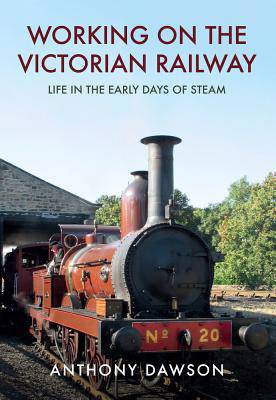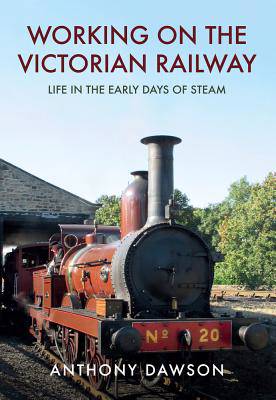
Je cadeautjes zeker op tijd in huis hebben voor de feestdagen? Kom langs in onze winkels en vind het perfecte geschenk!
- Afhalen na 1 uur in een winkel met voorraad
- Gratis thuislevering in België vanaf € 30
- Ruim aanbod met 7 miljoen producten
Je cadeautjes zeker op tijd in huis hebben voor de feestdagen? Kom langs in onze winkels en vind het perfecte geschenk!
- Afhalen na 1 uur in een winkel met voorraad
- Gratis thuislevering in België vanaf € 30
- Ruim aanbod met 7 miljoen producten
Zoeken
€ 20,95
+ 41 punten
Omschrijving
The quarter-century after the Rainhill Trials was an exciting period of growth and experimentation on the railways. The railway locomotive evolved from a lumbering curiosity to being indispensable - changing every aspect of daily life, from food (and how it was cooked), to heating and clothing - with more than 7,000 miles of track being laid in Britain between 1830 and 1855, and found on just about every continent around the globe.Much has been written about the success of the Rocket at the Rainhill Trials, but what was it like to drive Rocket and her contemporaries? Drawing on a wealth of early railway records, rules and regulations, together with the practical experience of working on replica early locomotives, Anthony Dawson sets out to explore what it was like to work, and travel, on Britain's earliest railways during the first quarter-century after the Rainhill Trials.
Specificaties
Betrokkenen
- Auteur(s):
- Uitgeverij:
Inhoud
- Aantal bladzijden:
- 96
- Taal:
- Engels
Eigenschappen
- Productcode (EAN):
- 9781445665221
- Verschijningsdatum:
- 1/12/2017
- Uitvoering:
- Paperback
- Formaat:
- Trade paperback (VS)
- Afmetingen:
- 163 mm x 231 mm
- Gewicht:
- 181 g

Alleen bij Standaard Boekhandel
+ 41 punten op je klantenkaart van Standaard Boekhandel
Beoordelingen
We publiceren alleen reviews die voldoen aan de voorwaarden voor reviews. Bekijk onze voorwaarden voor reviews.









